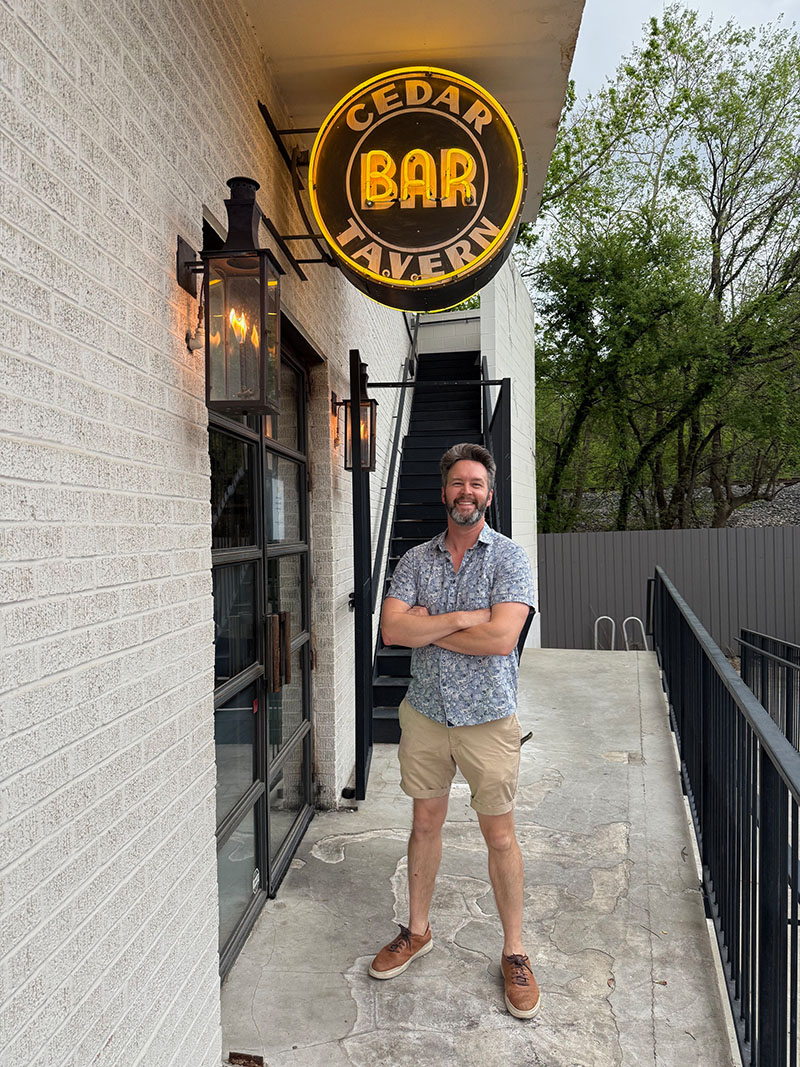It might not be a popular sentiment with the big ad agencies, but in my experience, the core of marketing is all about simplicity.
Marketing is about creating behavioral change.
If you don’t get this, you’ll waste money on activities, tactics and action. Meanwhile your competitor across the street is focused on results; what is actually moving the needle for their business.
If we’re going to be effective marketers, we shouldn’t be looking for activities. An example of activity-focused marketing that you might hear from an agency on a weekly call
“This week we went over 100 pages on your website and did XYZ.”
So what? What did you accomplish? What were you aiming to do? Did you accomplish that? It’s OK to miss on a goal. But you come back to your purpose – to create change – and analyze what went wrong. Try another experiment. And another. And another until you hit the result that you want.
In short, we need to focus on the outcome of changing behavior.
The 3 drivers of behavior change
Seth Godin said it best: The purpose of marketing is to cause change.
From Seth Godin:
In general, there are three things that cause people to change their actions:
- Status roles
- Affiliation
- Convenience
What about your marketing? Do you have a clear line of sight to the outcomes you are trying to drive? Do you understand the mechanism (not the channel) by which you’re trying to drive that change?
Let’s discuss the reasons why people change their behavior.
Status is a relative ranking compared to the people around you. Does eating at a particular restaurant give me status relative to my peers? Does wearing a brand of wristwatch? Does wearing a certain shoe?
Status is hierarchical. It’s not an us vs. them (we’ll talk about that in a minute). Rather it’s me in relation to the people around me – or the people I have access to on social media, etc. Status is the idea of a ‘select few’.
Next is affiliation – from Seth Godin:
Affiliation is related to status, but more specific. It’s “people like us do things like this.” In the words of the Rolling Stones: He can’t be a man because he doesn’t smoke, the same cigarettes as me.
Often purchases are about belonging. Nike and other athletic shoes create an affiliation between the buyer and a group of athletic, fit people. Going more specific. Vibrams (the shoes with individual toes) are people who are on the athletic fringe, willing to take on an extra challenge, interested in trying something ‘new’ that harkens back to a time where people walked barefoot.
Convenience is about what’s easiest, closest, cheapest – or whatever choice takes the least amount of cognitive load. Don’t underestimate the power of convenience. You could also call convenience being ‘top of mind’.
When I’m choosing a restaurant, sometimes I don’t want to read 10 articles to find out the perfect fit. I’m hungry and I want something good enough. Indeed, most of life is about having something that is convenient – i.e., good enough.
Let’s look at a few examples of these principles from around my home town of Austin, TX.
Status – make me better than
If someone says a product or business is ‘elevated’ – they’re talking about status.
With status, you have to bake ‘marketing’ into the core of the restaurant – physical space and part of town, food, service and price. Eberly, in Austin, TX, is a great example. A beautiful, storied restaurant with subway tile from the New York subway and a 20-foot long mahogany bar build in the 1860s and moved from New York City in the 2010s to Austin. Eberly is on many of Austin’s ‘best-of’ lists and it’s tough to get a reservation for a Friday or Saturday night. Their Instagram account reinforces their status. Their marketing consists of awareness, in particular via events – a way of introducing people to the stunning interior, the design and the thoughtful, delicious dishes.

At Eberly, it can be hard to get a reservation. It’s exclusive – only the select few.
It’s not a convenient location. Indeed, the road it’s on is typically a knot of traffic.
The parking sucks – unless you want to walk a block from your car in the heat along busy S. Lamar Blvd, you have to know which driveway to use to pull into the parking lot – and you have to pay for valet parking.
One last word on status, by way of an example: I remember one Thanksgiving my grandma Olive made a toast. We weren’t a ‘toast’ family, so we were already in unexpected terriroty. 96 years old, Olive stood in front of our extended family – all 17 of us looking up at her, not knowing what was going to come next. She said: ‘Here’s to us. Who’s like us?…<with a dramatic pause>…damn few.’
Status. It feels good to be part of a select group. Damn few indeed.
Affiliation – create a sense of belonging (us and them)
Eberly also trades on affiliation. With a beautiful interior designed with storied touches – the tile flooring in the Cedar Bar Tavern from the New York City subway system – it says, we are people who are cultured, who love aesthetics and well-made cuisine. Those are the type of people who eat at Eberly. There’s a story to know about the bar – we are people who know stories about the places we eat, and that adds to the experience. Affiliation is being around people like us – something we crave, especially if that group has special status.
These aren’t haphazard decisions. The creators of Eberly knew that status and affiliation would go over well – in particular where Austin has its fair share of great restaurants, but does lack in restaurants with an old-world reference to studies, leather armchairs and smoky whiskey in heavy tumblers – status.

Example of affiliation in action
In the hospitality world, dive bars are a great example of affiliation at work. Consider Ego’s in Austin. It’s a window-less dive and karaoke bar hidden in a parking garage off the ‘fly-over’ section of S. Congress, across from a dirty, sketchy greenbelt, next to a Chevron gas station.
People that go to Ego’s do so because that’s where ‘people like us’ go. We don’t care about status. We don’t care about convenience. We probably say we don’t care about affiliation, but that’s clearly what’s going on. Ego’s holds ‘my people’, people without egos (pardon the pun) who don’t need fancy cocktails or natural light. We revel in the grungy location, the sometimes-amazing karaoke and the reasonably-priced drink menu.
In the same way that Eberly’s built marketing into its core, Egos has marketing built into its core, mostly by location, offering, price and vibe. Affiliation is hard-earned, and Ego’s has a loyal following and has since it opened in 1979.
And of course, the building it calls home is slated to be demolished for re-development. So goes Egos, so goes Austin.
While not all choices are intentional per se, status, affiliation and convenience becomes a unique piece of a restaurant’s appeal.
For instance, Starbuck’s locations are picked with intention (shock, I know). They are picked for convenience and proximity to neighborhoods with a propensity to want coffee, but to want ‘good enough’ lattes. Starbucks isn’t about being the best coffee, in the way that Eberly strives for excellence. Starbucks is about being good enough, with friendly service, attractive interiors, and having some status attached to it.
In fact, Starbucks has established such a presence that it’s an ‘anti’ affiliated choice – as in, people identify themselves by hating Starbucks and frequenting local coffee shops.
Starbucks is the pinnacle of convenience. They are everywhere, they are fast, and the coffee is good enough – with a sprinkle of status thrown in for good measure.
Convenience – make it easy
A lot of SEO work is about creating convenience for someone doing a local search. If I search ‘restaurants near me’, I’m not looking for the best, I’m looking for good enough within the radius of a few miles.
And once someone is interested, can they look at the menu and find a dish that’s good enough? Can they easily find the hours and address? Does the branding of the restaurant express a ‘good enough’ level of quality, service and vibe to meet their needs? Does social media validate their initial impression?
In this example, it wasn’t a specific channel that drove the change in behavior. It wasn’t the website that created the opportunity. In both cases, they could only lose the opportunity by being difficult to use, below a standard of quality, or lacking a key piece of information.
It was the simple fact of convenience – and yes, discovery is a facet of convenience.
Once you know the avenue of causing change, you can focus on the means of expressing that change.
If you know you’re operating on convenience, then it’s an easy decision to focus on local SEO and PPC campaigns. You know you’re trying to get in front of people who are currently searching for somewhere to eat. Hangry searchers are looking for the good enough option – close enough, with what sounds good in the moment. You know you want to do everything you can to be top of mind.
Creating behavior change
Back to change.
What creates the change needed to drive guests to these locations? Starbucks, Eberly, Ego’s?
Eberly relies on outbound event coordinators and PR (best of lists) to drive new people in the door, and relies on status – the unique and and exclusive design of the interior and location to create word-of-mouth new and repeat business.
Ego’s has its own brand of uniqueness, an exclusivity and a cultivated vibe to keep ‘our people’ – a prime example of affiliation – coming back. Which is to say, I’m not exactly sure how they do what they do, only that it works year after year.
Starbuck’s relies on convenience of location, brand status and a rotating roster of new drinks to bring people to (and back). I bet they run PPC campaigns and have optimized local SEO to make sure they’re always findable.
But back to your restaurant.
Are you driving behavior change by communicating your status, affiliation or convenience?
And is this getting you the outcome you desire?
You have to be honest about the qualities of your restaurant and why people come.
Local SEO works so well for restaurants because so many rely on convenience to get people in the door. For example, convenience is a kids playground, ideal for families, musical entertainment for adults and a beautiful views (thinking of Angel’s Icehouse in Lakeway, Texas outside of Austin). Great food, outdoor spaces shaded by live oaks, with a playground, bar, small stage and ga-ga ball field.
But as we’ve seen, local SEO isn’t always the answer. Sometimes brand and exclusivity is. Sometimes it’s PR.
And sometimes my appeal isn’t by demographic, it’s by occasion. Don’t you think that Eberly guests also get take out pizza ? Or that Starbucks-goers occasionally like high-end dining?
I have to know the driver of behavior, and know what platform audiences use when they are looking for a given experience.
How to get back to basics of marketing your restaurant
You have to ask the question: Why does my restaurant exist?
One of my favorite spots in Austin’s Hill Country is a brewery called the Shady Llama.
It’s an easy yes for a family. Parents can drink a unique beer in the shade while gazing out across hill country vistas.
Kids can toss a football, feed the llamas (yes they have llamas) or play on an enclosed playground.
Hungry? There’s a great food trailer. They’ve got a few TVs for major sporting events and chairs everywhere.
I think of it all the time (I have 3 kiddos who love animals, the more exotic the better).
OK, so back to your restaurant. Why does it exist? is it:
- To give parents a place to relax while their kids play?
- Amazing mexican food at affordable prices?
- To create high-end experiences for people who are in the food scene?
- To give like-minded people a place of their own?
If you can connect your restaurant’s ‘why’ to one of the 3 motivators, then your marketing activities are much more likely to be successful.
About the author

Jon Simmons
Jon is an Austin-TX based visual branding and marketing specialist. He specializes in local discovery for home & professional services.
Jon has over 15 years of experience driving ROI for small businesses in the form of awareness, calls, emails, downloads of menus and (most importantly) customer visits.
Jon is also a co-owner of Slow North along with his wife (and company CEO) Michelle Simmons. At Slow North, Jon led an SEO campaign to realize a 650% sustained rise in organic search and local search traffic.

